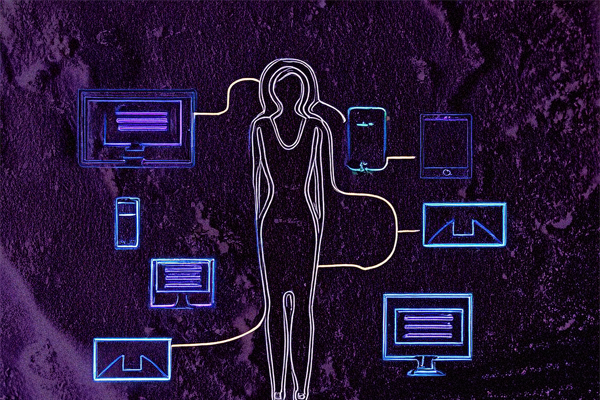- Amanda Mahoney
- April 1, 2025
AI-Driven Digital Transformation

Artificial intelligence is reshaping how organizations interact with users, optimize processes, and make informed decisions. At the same time, 77% of Americans do not trust businesses to use AI responsibly. The technology industry stands at a crossroads. On one hand, AI presents a revolutionary set of tools that can measurably improve the experience of humans interacting with technology. On the other hand, many of those same humans fear its implementation.
That’s why our AI-driven solutions are designed to be transparent, ethical, and human-first, seamlessly integrating in CX, HCD, and UX principles and strategies.
AI Solutions that Empower Us to Make Data-Driven Decisions
AI makes complex problems easier to solve for both product teams and everyday users. When we bring AI into user research and experience design, it is not just about speed. It is about uncovering deeper insights and pushing innovation in ways that were not possible before.
Sentiment analysis is a great example. AI can process massive amounts of user feedback and engagement data, identifying patterns that would take humans weeks to piece together. Machine learning automates usability testing and research synthesis, allowing teams to focus on making the experience better. AI-driven accessibility testing goes beyond checking for compliance. It ensures that products work seamlessly across different environments and devices for all users.
Predictive analytics and decision intelligence take this even further. Instead of reacting to user behavior, AI helps teams anticipate needs, personalize interactions, and optimize services in real time. This leads to better resource allocation, more efficient workflows, and a smoother user experience.
AI makes complex tasks approachable for both product teams and the everyday user. When applied to user research and experience design it accelerates insights and pushes innovation. Initially, AI-powered sentiment analysis uncovers patterns in user feedback and engagement. Machine learning automates usability testing and improves research synthesis. AI-driven accessibility testing ensures compliance with usability and inclusion standards.
Using AI for predictive analytics and decision intelligence, AI anticipates user needs, optimizing service delivery and engagement. Moreover, data-driven insights enable smarter decision-making at scale. Meanwhile, predictive models enhance resource allocation and risk management.
AI Solutions for Improved Design
AI is not taking over. It is making work easier, faster, and more user-centered. AI-powered tools streamline customer interactions in ways that feel natural. Generative AI and large language models are transforming conversational AI, making chatbots and virtual assistants more useful. AI-driven UX writing improves messaging by ensuring it is clear, engaging, and tailored to the right audience.
Personalization is also evolving. AI-powered recommendation engines adjust dynamically based on user behavior rather than relying on static suggestions. Intelligent nudges help users make informed decisions while keeping interactions intuitive. Real-time personalization ensures that experiences feel relevant and efficient at scale.
AI is not replacing human expertise. It is amplifying it. It helps teams work smarter, design better, and create experiences that are efficient, seamless, and effective. That is the real power of AI in CX, HCD, and UX.
Additionally, implementing AI-driven tools streamline customer interactions.That includes using generative AI (GenAI) for conversational AI. Large language models (LLMs) support content creation and information retrieval. AI-powered UX writing optimizes messaging for engagement and clarity.
Emerging AI technology further evolves chatbots and virtual assistants. For instance, AI-powered recommendation engines adjust dynamically based on user behavior. Real-time personalization delivers tailored interactions at scale. Intelligent nudges enhance decision-making while respecting user autonomy.
AI Solutions that Drive Automation, Efficiency, and Security
AI-driven transformation goes beyond these design considerations and produces intelligent automation and optimization. It streamlines workflows, reducing manual effort and improving operational efficiency. Robotic process automation (RPA) replaces repetitive processes, enhancing speed and improving accuracy. Meanwhile Natural Language Processing (NLP) powered automation interprets documents and improves both processing and customer service interactions.
While many of these solutions transfer low-effort work to AI tools empowering our human teams as they tackle high-effort initiatives, AI is a powerful ally in securing that work. AI-powered fraud detection strengthens security and compliance. Privacy-first AI frameworks ensure transparency and ethical data use. Explainable AI (XAI) builds trust by making AI-driven decisions understandable.
2X
Reduced Effort

